In Japan, traveling on the train with a bicycle is both a blessing and a curse. These are the pros and cons, as I see them.
Pros
- You don’t pay extra for taking a bike on the train in Japan. Even on the mighty shinkansen bullet trains. Nada.
- You can take a bike on any train at any time on any carriage.
Cons
- You have to partially dismantle the bike. That is, at the very least, remove the front wheel. If your bike is of the folding variety, you’re off the hook – no dismantling required.
- The bike must be completely covered with a bike bag (or wrapped in something such as a 500 yen large blue tarpaulin).
- There are no ‘bicycle areas’ on the trains. This means that if your bike doesn’t fold down small, you may need to stay with your bike and move it when people want to move between carriages etc.
- TOP TIP: Trains stop at pre-determined locations on Japanese platforms; find the end or front of the train that you’re fixing to board – end or front carriages usually have less people in them, and less thoroughfare. You’ll spend less time stressing about whether your bike is getting in someone’s way. I.e., best to put your bike at the extreme end or extreme front of the train, in the carriage entrance area. Also, use the handrails etc to secure the bike from falling over…then just enjoy the ride.
Step 1
Pack your panniers into a lightweight fold-up sack, and attach this to your fold-up trolley. You do have a lightweight fold-up trolley, right? Virginia bought this one for $15 at an electronics store in Sapporo.Step 2
Panniers snugly ensconced in their bag and trolley, time to sort out the bike. Prepare the bike bag.Step 3
Fold the bike. Virginia travels extensively around the world on academic conference trips and the likes with her Tern Link P24h. The ‘N-fold’ is very simple, and best of all, the bike stays standing upright once folded.
Step 4
Get that bike in the bag. Virginia’s bike bag is a Tern padded ‘Stow Bag’ made of extra heavy duty fabric and has some degree of padding. She puts the bike on planes just with this bag and the bike seems to have survived multiple inter-continental flights.
Step 5
Shoulder the bike-in-the-bag, grab the trolley, and head to the ticket dispenser, parting the crowds like Moses and the Red Sea.
Step 6
Buy the ticket.
Step 7
Squeeze through the gates and look for an elevator up to the platform.
Great breakdown by Two Wheel Cruise




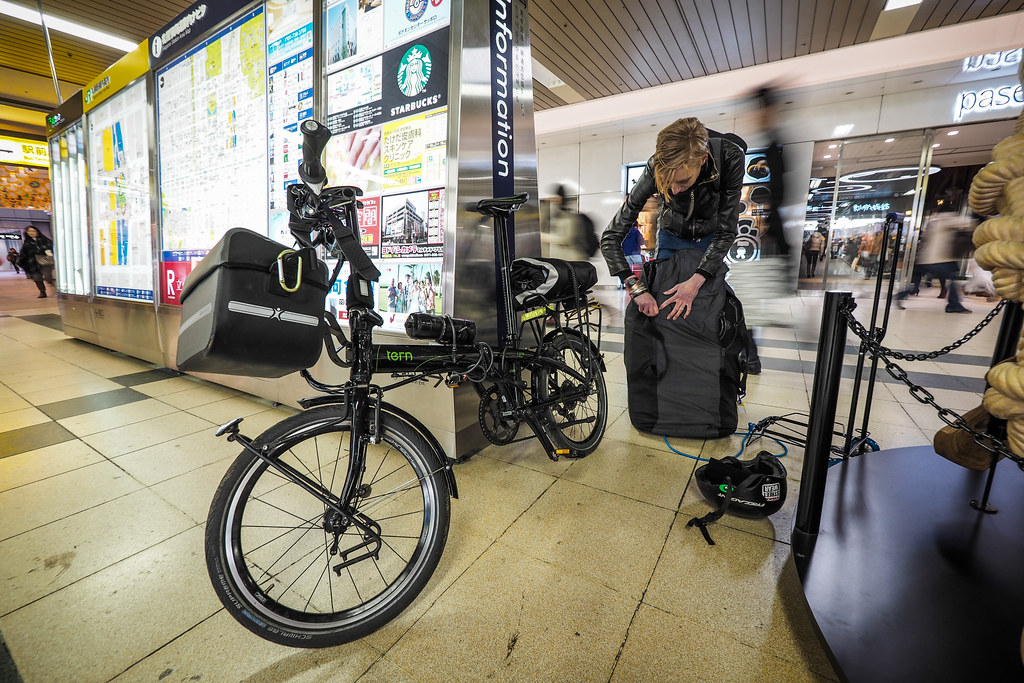
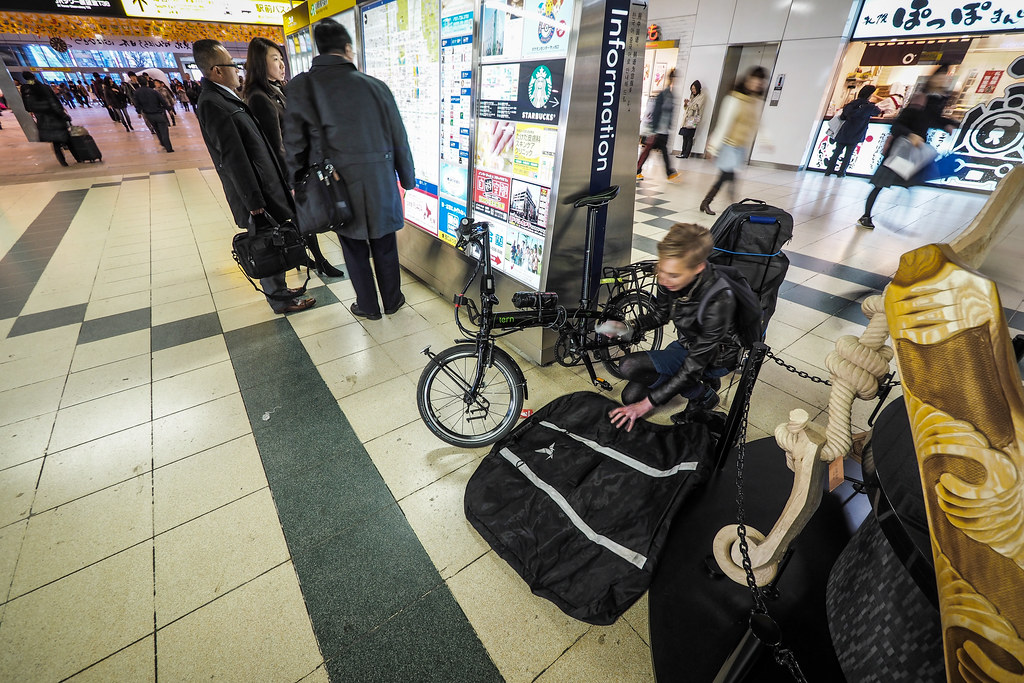
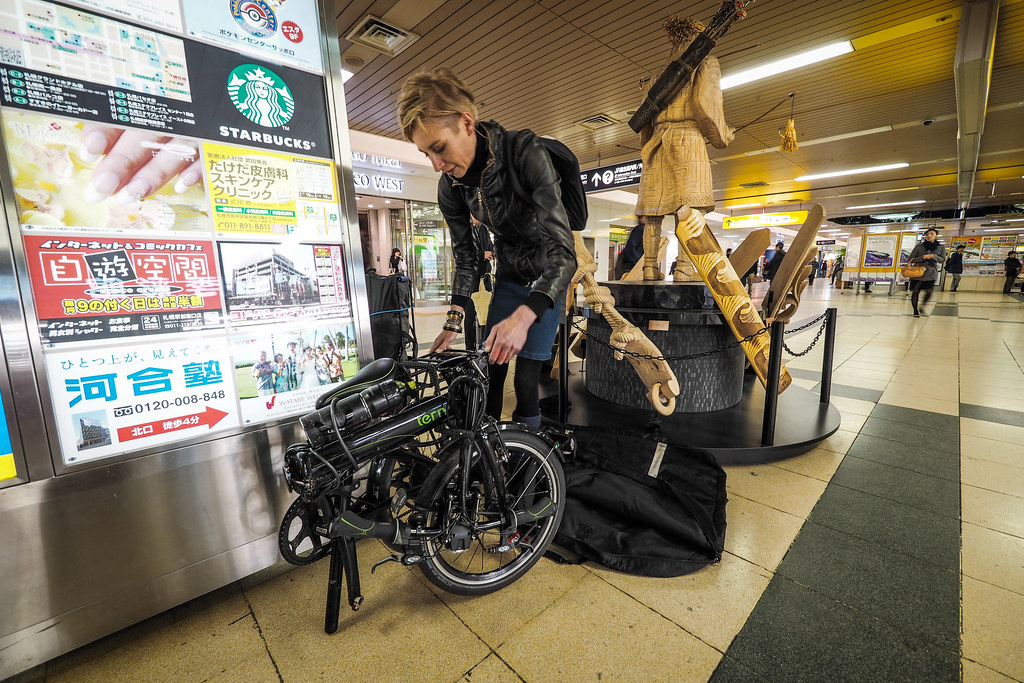
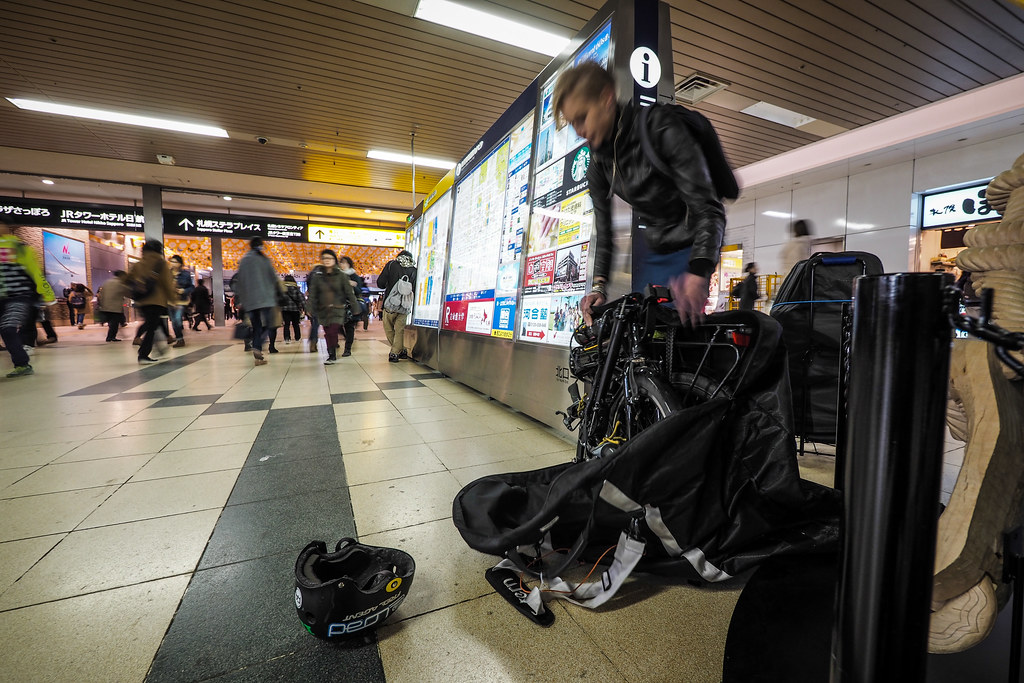
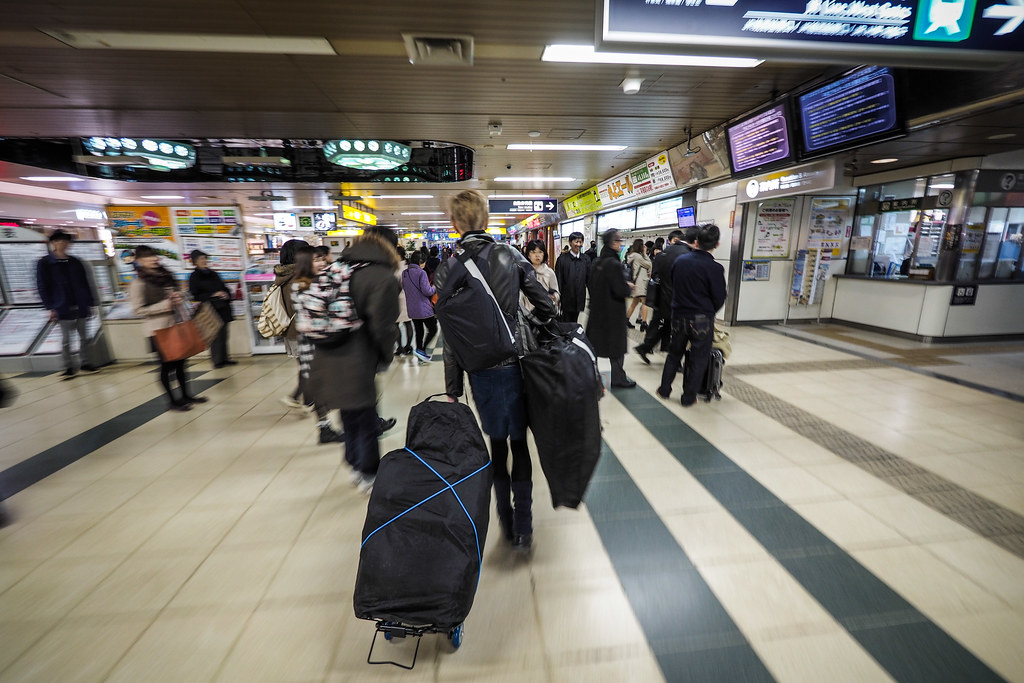

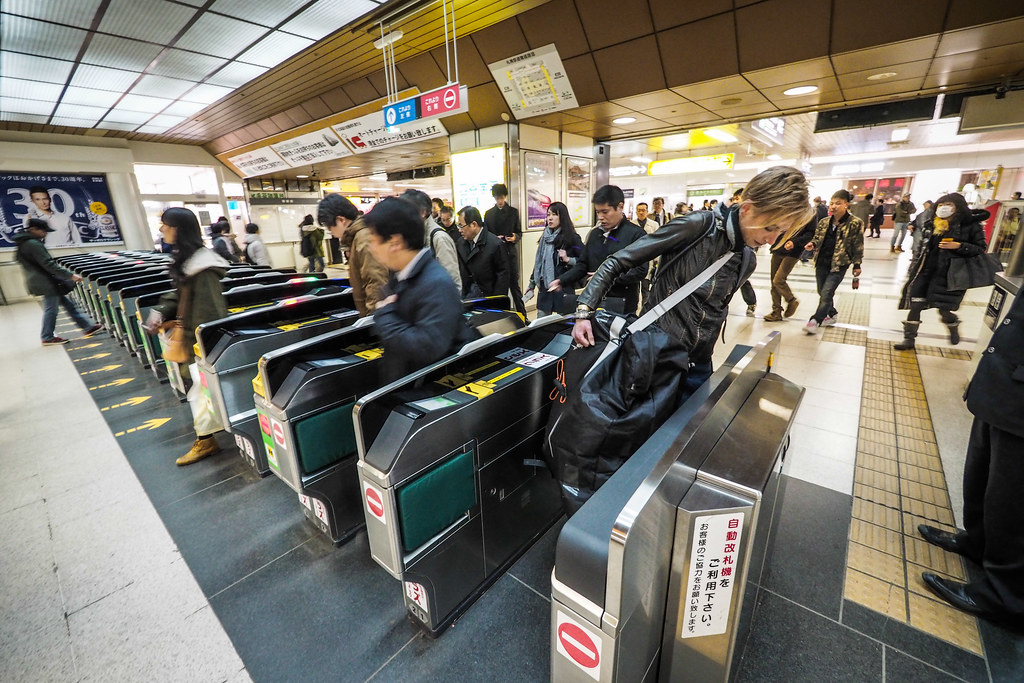
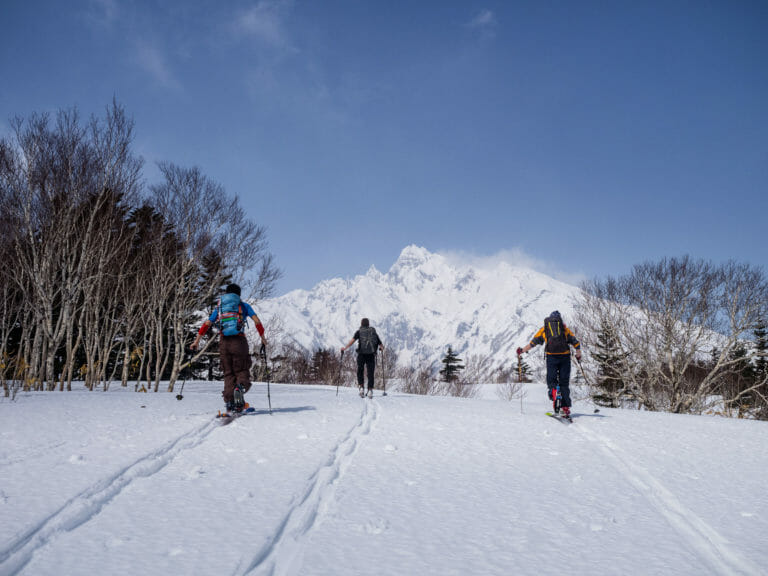
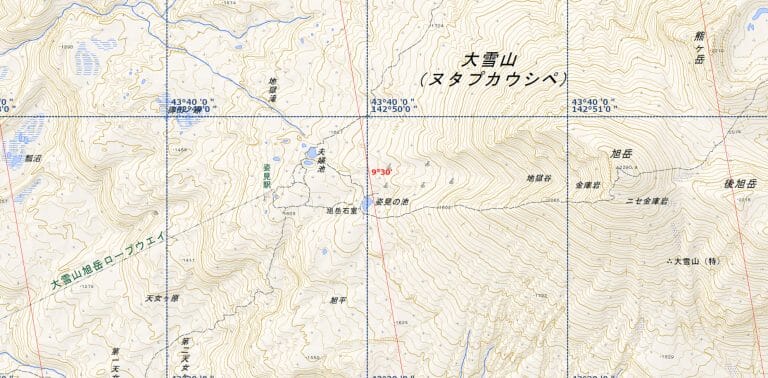
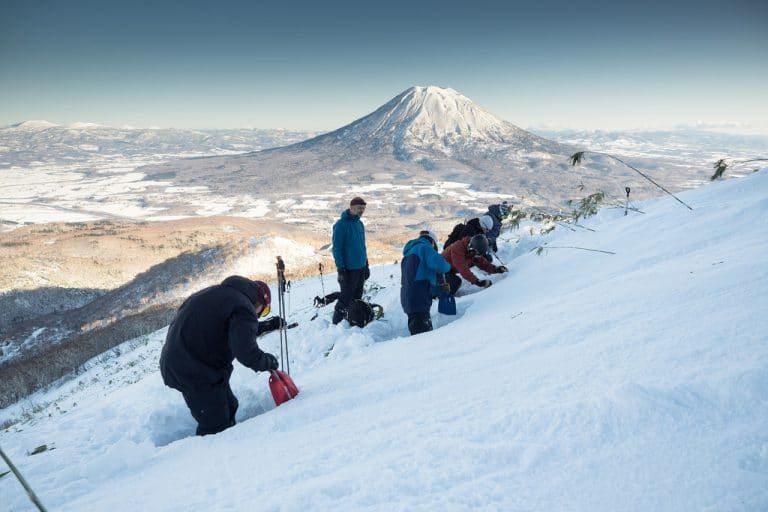
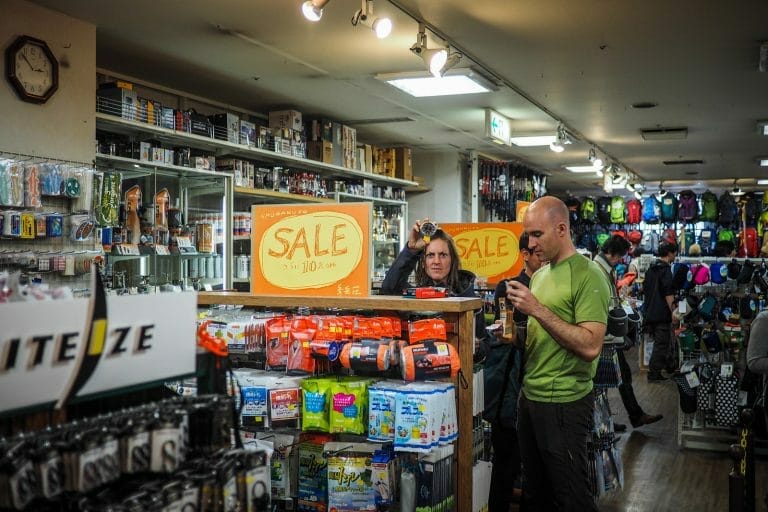
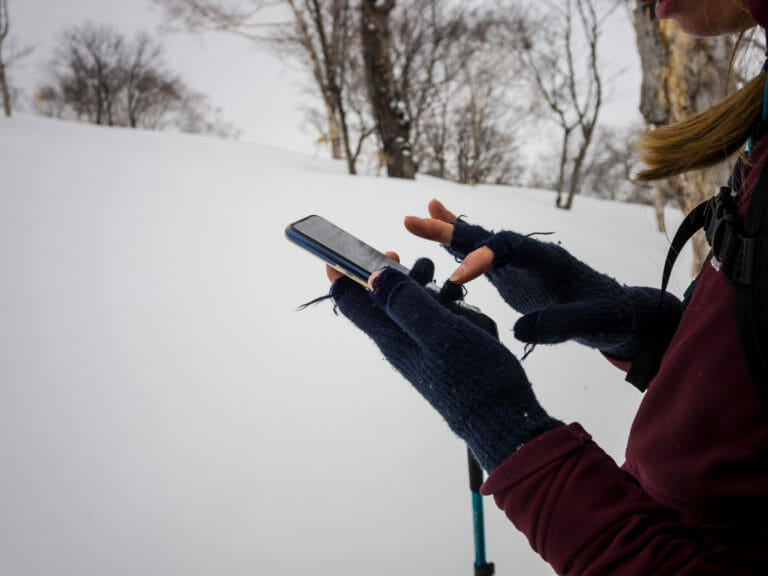

27 thoughts on “Traveling with a Bike on the Train in Japan”
Hi
I’m thinking of doing a cycling trip that will end up in Wakkanai this summer (from Kagoshima).
What would the best way to get myself and my bike back to Sapporo and eventually Tokyo? Bus, train or try and find a box in Wakkanai and fly. I have a Rinko bag for my bike.
Hi Chris, if I were you, I would take the express train from Wakkanai to Sapporo. Very easy to put your bike on the train with your rinko bag. Hope this helps!
Thank you!
Have you ever put your bike on a Highway bus (w/ Rinko) Ex. Sapporo to Hakodate.
Hi Chris! I have put my bike on a bus from Wakkanai to Sapporo. So long as it is fully covered, and the bus is not too crowded, they’ll usually take it. It the bus is close to full with passengers, the luggage hold will also likely be quite full, so they may refuse. I hope this helps.
Hi Rob!
Thanks for the post!
On taking the bus, I was wondering about taking a boxed bike on the chitose airport limosine bus. We are flying out of CRT to Tokyo, and planning to box our bikes up in Sapporo. The bus looks great, but the website is unclear about whether or not bike boxes will be accepted. They seem to be too large, but it also says that they take surfboards so I was hoping they might fall into that category. Do you have any info about this? Thank you, Kate
Pingback: What is the best way to travel around Hokkaido? - Adventure Hokkaido
Hello,
Thanks for all this info. I am travelling to Narita airport with my bike boxed up. Do you know if they will let me on a train with my bike in a box?
No problem at all. Box or bike bag or large tarpaulin – just so long as the bike is covered, you’ll be fine.
Hello Rob. not sure if this will find you but here goes. I have been on this website dozens of times in recent months. I am travelling to Sapporo from Australia on the 3rd of June with a mate. Planning to catch train To Wakkanai from Chitose and ride back through to Sapporo basically via your coastal route maybe with slight variation here and there. from there through the Niseko hills area and down to catch the bullet train to Tokyo. Having lots of problems finding good information about obtaining a suitable bike box at or around the airport (Narita). Do you know if you can purchase a cardboard bike box at the airport, eg from an airline, or suggest a bike shop close to the airport where we may get them. Thanks again if you are able to reply.
I’ve not heard of airlines selling bike boxes, and sorry, I don’t personally know of any bike shops near the airport. Your best bet would be to visit some bike shops in Tokyo to ask for a bike box. Note that many bike shops will dispose of boxes pretty quick after receiving bikes, so just walk around a number of them until you find one with some spare boxes. I’ve done this before with no issues. Google Maps will direct you to the nearest bike shops. I hope this helps!
KLM sells special bicycle boxes, but I don’t know if other airlines do as well.
Dear Rob
Thanks for this usefull post! A question, where would you buy a tarpeline in Japan? Do you have any suggestions? Thanks answering. Christa
Not everyone has folding bikes. I would rather not have to disassemble anything. I hope to get my bike with bags into a doorway at the front or end of trains should I travel to Japan in a few years. Is there still a Japanese National Railways representation in Paris?
Great help
planning a 1 month North-South Honshu trip for next year and there will be a few train segments………..
small point is that there is generally no need to squeeze through the gates – use the manned wide entrance/exit where the staff will check tickets if the station doesn’t have a wide ‘baggage’ gate
Good point! That’s what I usually do also.
Hello, I have read your article on travelling with a folding bike in Japan. I am part of a group maybe 15 in total who are planning a trip to Japan next year. My question is how difficult it might be to get 15 bikes on any given train. A couple of us are taking folding bikes but the rest will be hiring bikes. We know they need the front wheel removed and bagged for the larger bikes. We have one day planned which involves three train changes to get to Lake Biwa from Onomichi.
Hi Joy, thanks for the message. My first reaction is to shudder – 15 people with bikes will not be easy to get on one train, and I am pretty sure the train station staff will freak out. BUT, it is certainly not impossible. It will require some coordination in order to keep things as stress-free as possible:
1) Ascertain ahead of time how many carriages each train will have on each leg of the trip. You’ll want at least four carriages, assuming each carriage has two doors, and you put two bikes in each doorway (i.e., you can get four bikes on each carriage). NOTE: It is likely that the bikes will block passage-ways, so there may be a need to have at least one person standing with the bikes to shuffle them out of the way if needed, during the train journey.
2) Pack up the bikes outside the station in an area that is not too busy. 15 people packing up bikes will take a lot of space, and Japanese train stations are generally quite busy. Allow at least 1 hour before your train departure time to pack the bikes.
2) Take the packed bikes through the ticket gates, and up to the platform for your train. You’ll want to be on the platform at least 15 minutes before the departure time.
3) Find the door positions for your train. They are usually marked (in Japanese) on the platform. You will want to have no more than two bikes per door. That is, your group will need to be split up well before the train arrives. Make sure everyone is ‘in position’ at least 10 minutes before the train arrives. Any more than two bikes per door and you will completely block accessways once on the train, because it is likely you’ll be storing the bikes in the carriage doorways/entrance-ways.
4) When the train arrives, allow all other passengers to embark before taking the bikes on. This means that all 15 of you may be standing for the duration of the trip, depending on how busy the train is. I.e., you should assume/expect that you won’t get seats. Unless, of course, you book seats in advance, but even then, someone will likely need to stay with the bikes on each carriage if they are blocking accessways, so that they can move the bikes if other passengers need to get past.
5) For panniers etc, put these on the train last. Have one person at each door on the platform, and one inside the door, and relay the panniers from the person on the platform to the person inside the door. You’ll be able to store panniers and other luggage on luggage racks etc.
NOTE:
a) Your bikes will most likely be stored in the doorways, rather than in bicycle-specific or luggage-specific areas. Some trains may have ‘lounge’ like areas that will take a couple of bikes.
b) Bring plenty of straps and/or bungee cords to attach the bikes to handrails etc, to stop them from falling over.
I hope this helps – good luck!
Hi Rob! Thank you so much for all your information, pictures and explanations!
I’ll do the lenght of Japan next march by bicycle from Haterumajima to Hokkaido (my itinerary is 3800 km long).
After that I’ll go to the Phillipines and maybe do another adventure.
I have a big question, and I really appreciate your opinion.
Here my question:
Im between: The Tern Node D16 and the Surly Disc Truck (I wanted the Tern P20 but isnt available in Japan).
I love the practicity of the Tern but for the same money I can have a better machine perhaps.
Could you tell me please for which one you would go?
Thank you in advance!
If it is your only bicycle, I would choose the Surly Disc Trucker. Yes, it will be more effort to put on a plane or train. But considering the following:
My point is, there isn’t all that much time that you save using a folding bike versus a non-folding bike. So, better to choose the more comfortable bike for a long trip! I find that the folding bike is convenient for short trips, but for longer ones, I would prefer a larger bike.
Hi Rob sensei! Thank you so much! Now I’ll go with the Surly without doubts.
Rob sensei I really appreciate your opinion and criteria! And your time for sharing and respond.
Is so nice when you can make a choice with full understanding and based on someone that really knows and has experience as you.
Again, thank you so, so much!
Great info. My wife an I have just completed a three year ride around Europe with tern fold ups we are now thinking of riding and train Japan.
Our web blog is http://www.tbeartravels.com. Search Swiss bike mission. The stories will take you down the Rhine, elb and Oder rivers.
Foldup bike on trains the only way to travel……such freedom.
Fred and Bev
Awesome! I am sure you’d love it. The trains are not as bike-friendly in Japan as they are in Europe, but it is perfectly doable!
Maybe you should consider TERN N8 , it came with build-in trolley rack…. Might solve your problem.
https://www.youtube.com/watch?v=SuZpMC5_fMI
Many thanks for your description ! very helpful.
No problem! I am glad it was useful.
thank you, this is great!
I’m glad it was helpful!